PDF chapter test TRY NOW
The lesson opens with the narrator stating that Richard H. Ebright, at the age of twenty-two, excited the scientific world with his findings. Everyone was excited because of his theory, and the theory was about how cells work. The cell is a smallest fundamental unit of a plant or animal. He is not only a scientist but also the former 'scout of the year'. The term 'scout' refers to an international movement - that intends to teach young boys and girls a spirit of loyalty, patriotism and thoughtfulness toward others.
The narrator then says that Richard and his college roommate explained the article in a journal known as 'Proceedings of the National Academy of Science'. It is a multidisciplinary scientific journal. The speciality of the journal is that if anyone's article gets published, it is considered a proud moment. Likewise, the same happened with Richard and his college roommate. Their article on how cells work was published in it.
The narrator then says that a college student's article was published in the journal was the first time. Usually, scientists, researchers, and important personalities' work will be published in scientific journals. The narrator then compares Richard's achievement with baseball. Baseball is the most significant popular sport and the national game in the USA. In such a game, if a fifteen-year-old boy gets the chance to play and hit a home run, what would be his mindset. A home run is a ball hit out of the playing field. Getting an article published in a scientific publication at fifteen is comparable to hitting a home run at the first bat.
The narrator then mentions that the publication of Ebright and his roommate's article in the journal was one of Richard Ebright's numerous accomplishments in science and other fields. He also said that his achievements and findings started with his interest in butterflies.
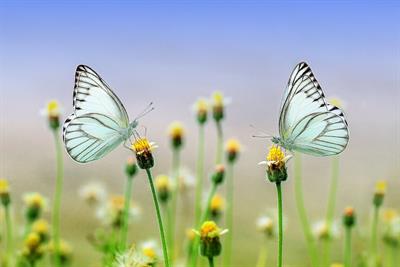
Butterflies
The narrator then says that Ebright was the only child of his parents. He grew up in Pennsylvania, which was on the northern side of Reading (name of a place). As Richard had no friends or siblings, he could not play baseball or football during his childhood. Richard then said that he could only do one thing by himself. It was collecting things because he didn't have any companions with whom he could play football or baseball. This demonstrates that his lonely youth influenced his desire to gather things.

Ebright collected coins and rocks during his childhood days
The narrator then says that Ebright does become not only an eager scientist but also an astronomer. He had the habit of admiring the stars. Ebright used to gaze at the shining stars all night. It shows his interest in marvelling at things.
Ebright had always been interested to learn new things and had a sharp mind. Also, the narrator says that in Ebright's life, his mother's role was very important. His mother used to motivate him to learn. She used to take him on learning trips. In addition to that, she used to buy him telescopes, microscopes, and cameras. Also, she would buy him mounting materials and other instruments that would help him learn new things. Here the term "mounting material" refers to a glass slide which can be kept under a microscope to see the objects. While looking at the things which were bought for him indicates the objects in 'plural form' (i.e., telescopes, microscopes). It might be because she had bought it multiple times because of her son's interest in learning things.
Ebright's mother was his only companion until he went to school. We learnt from the earlier paragraphs that Ebright did not have any friends during his childhood days. After he started school, his mother would bring him home some friends. Here one can find that as he had no siblings, his mother used to bring his friends to their home. She might have done it to make him happier and mingle with others.
Ebright and his mother spent their nights together doing and learning things. When he was in third grade, Ebright's father passed away. After his father's death, Ebright became the whole life and support system of his mother's life. She called him Richie (pet name).
Ebright and her son used to spend most of their evenings together. If he did not have anything to do, his mother would find some work for him. After telling that, she insisted on the word 'work' and said she would not give him any hard physical work. On the other hand, she used to give him some learning tasks. He liked the work his mother gave him and was interested in learning it.
Ebright learned everything his mother said. He was a bright student, and he used to score good marks in class. In addition to that, his mother said that "On everyday things, he was just like every other kid". Apart from studying and discovering new things, he acted like a normal child. It implies he used to do activities like normal people.
While studying in the second standard, Ebright collected all the 25 species of butterflies found in his hometown. The narrator then describes the species and subspecies of butterflies collected in six weeks in his hometown (Reading, Pennsylvania).
Let's look at the twenty-five species of butterflies found in Ebright's home town in detail.
Gossamer-Winger Butterflies- The Gossamer-Winged Butterflies are small insects with slender bodies and vividly coloured wings. Under the gossamer winger family, there are eight varieties of butterflies. They are White M hairstreak, Acadian hairstreak, bronze copper, bog copper, purplish copper, eastern tailed blue, melissa blue and silvery blue.
- White M Hairstreak- The White M Hairstreak is a dark little butterfly that spends most of its life in the treetops, feeding on honeydew, making it best observed through binoculars.
- Acadian Hairstreak- The Acadian Hairstreak often perches on the tops of vegetation. It is light grey underneath, with a conspicuous submarginal row of orange on the hindwing below that continues over the blue tail spot.
- Bog Copper- The Bog Copper is the tiniest copper found in Wisconsin. It can only be found in bogs where the host plant, wild cranberry, flourishes. A lazy flier prefers to fly low to the ground in the bog's wettest areas.
- Purplish Copper- The purplish copper wingspan is 30–38 mm. Males have a brown upper surface with a purple iridescence, while females have an orange upper surface. Both males and females have a large orange stripe at the border of their hindwings.
- Eastern Tailed-Blue butterfly- The Eastern Tailed-blue butterfly is a tiny butterfly with a cobalt blue male and a slate grey female. It's most common in open grassy areas like sunny fields and pastures.
- Melissa Blue- The Melissa blue is a butterfly that belongs to the family Lycaenidae. It is most commonly found in western North America, from Canada to Mexico.
- Silvery-Blue Butterfly- The silvery-blue butterfly is a small North American butterfly. Males have a bright blue upperside, while females have a drab greyish-blue upperside.
Wood Nymphs and Satyrs- They are a group of butterflies that can be troublesome to identify in the field. There are two varieties of butterflies under the Wood nymphs and satyrs family. They are, eyed brown and wood nymphs.
- Eyed Brown Butterfly- It is a common species of wet meadows throughout the state. It is often seen lazily working through the tall grasses and sedges, rarely in a hurry or flying above the vegetation, even when disturbed.
- Wood Nymph- It is a brown American butterfly. It is most commonly found in grassy habitats and light woodland.
Monarch Butterfly- The monarch butterfly, or simply monarch, is a milkweed butterfly that belongs to the family Nymphalidae.
Sulphurs and Whites- The sulphurs and whites, together known as "pierids", are usually easy to recognise by their colours. Most species in this family have bright orange, yellow, or white wings, often with black markings. Under the sulphurs and white family, there are three species of butterflies. They are Olympia Marble, cloudless sulphur and European cabbage.
- Olympia Marble- It is the smallest white in Wisconsin. It is found from mid-April through early June, depending upon the year and where you are in the state.
- Cloudless Sulphur - It is the most familiar and attractive Florida butterfly and is particularly prominent during its fall southward migration.
- European Cabbage- The large white is common throughout Europe, North Africa, and Asia to the Himalayas, often in agricultural areas and meadows.
Brush Footed Butterflies- The scientific name of Brush footed butterflies is Nymphalidae. They are the largest family of butterflies. Some of the butterflies that belong to their family are variegated fritillary, Harris checkerspot, Pear crescent, Mourning cloak, Painted lady, Buckeye, Viceroy, white admiral, Red-spotted purple, Hackberry.
- Variegated Fritillary- It is a species of large, primarily orange butterflies found in both the Americas.
- Harris Checkerspot- They are rich orange in base colour with wide black borders that help to distinguish them from other similar butterflies.
- Pearl Crescent- The pearl crescent is a butterfly of North America. It is seen in all parts of the United States. Its habitat is open areas such as road edges, vacant lots, fields, and open pine woods.
- Mourning Cloaks- The mourning cloaks, also known as Nymphalis antiopa, are found in North America and the Camberwell beauty in Britain. It is a large butterfly native to Eurasia and North America.
- Painted Lady- The painted lady, also called Vanessa Cardui, is most commonly found in North America.
- Buckeye- The buckeye is seen in the United States east of the rocky mountains and in Mexico. Its habitat is open areas with low greenery and some bare ground.
- Viceroy Butterfly- The viceroy butterfly is brush-footed. They have tiny, hairy forelegs that look more like brushes than feet and are not used for walking. It is dark orange with black veins.
- White Admiral- The white admiral is a woodland species that fly from tree to forest floor with only a few effortless wing beats.
- Red-Spotted Purple- The red-spotted purple is a beautiful forest butterfly commonly seen in wooded suburban areas.
- Hackberry Butterflies- They are known to be extremely ‘friendly,’ often landing on people and enjoying the treat of salty sweat.
Snout Butterfly- The snout butterfly is a butterfly of the family Libytheidae, having very long palpi carried extended in front of the head.
After collecting the twenty-five species of butterflies, Ebright thought it would be the end of his butterfly collection. But after that, his mother brought him a children's book. The name of the book was 'The Travels of Monarch X'. That book inspired him to become a young collector by teaching him how monarch butterflies migrate to Central America.
When Richard's mother gave him the children's book, his curiosity about exploring the world of science increased. He might have gotten to know that he had many things to explore from there.
After reading it, Ebright's mother wrote a letter to the zoologist regarding sending tags. Very soon, Ebright attached light sticky tags to the wings of monarchs. The reason behind attaching the sticky tags was that they should not fall from them. In addition to that, it was mentioned that if anyone sees the tagged butterfly, they can send the tag to Dr. Urquhart.
The narrator then says that the butterfly collecting can only be done in the last six weeks of the summer. One can find the butterflies in the summer of Pennsylvania during June, July and August. While the summer season goes on and the autumn begins, the butterflies would migrate to Central America. So, Ebright used to collect the butterflies during his summer holidays.
Ebright then realised that if he continued to collect butterflies one by one, he would never be able to collect enough. As a result, he chose to nurture a swarm of butterflies in his basement as his next move. He used to catch a female butterfly, harvest her eggs, and raise them through their life cycles in his basement. After that, he would tag the butterflies' wings and release them. Thousands of monarchs (butterflies) grew up in his basement for several years, at various stages of development.
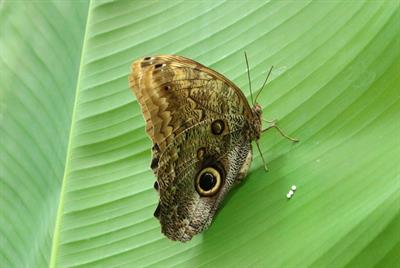
The below graph represents the number of butterflies collected in six weeks.
- Gossamer-winged-8
- Wood Nymphs and Satyrs-2
- Brush footed- 10
- White and sulphurs-3
- Monarch-1
- Snout-1
While Ebright examined the success of others, he had already begun to cultivate a competitive mentality inside him. He had now resolved to work on a real experiment for the following year's exhibition. He then said that the subject he knew most about was insects because he had been studying them for quite some time. As a result, he wrote to Dr. Urquhart for ideas and sent back a lot of ideas for his next year's project. He remained busy with those ideas throughout his high school and won many prizes at the county fair and international science fairs.
Ebright attempted to discover the origin of a viral sickness that killed virtually all monarch caterpillars every few years while in eighth grade. Ebright suspected that beetles spread the illness, so he cultivated caterpillars in a beetle-infested environment. It was pointless, but he gained credit for his research by demonstrating that he had performed such an experiment.
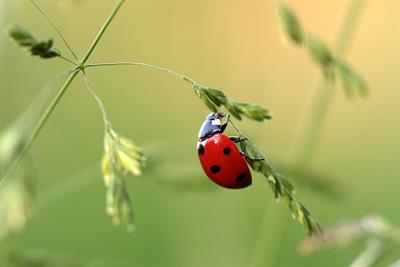
Ebright sought to demonstrate whether a bird would eat monarch butterflies or not in his project. He discovered that the starling (a common bird with dark brown or black feathers that dwells in major groups in different parts of the world) would not eat the butterflies that ordinary birds eat. For instance, ordinary birds prefer to eat viceroy. Meanwhile, starling prefers to eat monarch butterflies. In addition to that, the starling birds would eat the maximum number of monarch prey they get. Later it was revealed that the viceroys imitated the monarchs. This project earned him first place in the Zoology department and third place overall in the county science fair.
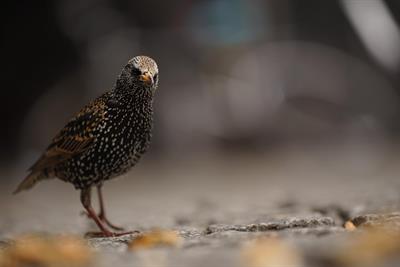
Starling
Ebright began a study project during his second year of high school. He discovered an unknown insect hormone that subsequently assisted him in developing his new theory regarding cell life. The question he was attempting to answer was simple and clear. He asked what the purpose of the 12 small gold dots on a monarch pupa was. This opens the doorway to a world of scientific discovery for him.
Ebright and his classmate (another excellent science student like Ebright) made a plan to clarify the professor's thought and prove what it would be. To find the spots on the monarch butterflies, they designed a device. The device demonstrated that these patches released a hormone required for a butterfly's whole development from a pupa to the big one.
Ebright's project on the spot in monarch butterflies won him the first position in the county science fair. As a result of his victory, he had the opportunity to enter the International Science and Engineering Fair. He showcased his project, achieving third place in the zoology division.
In addition, Ebright had the opportunity to work during the summer at the entomology laboratory of the Walter Reed Army Institute of Research. As a high school junior (a student in their third year of study), he continued his experiments with the monarch pupa. After experimenting, he earned the first position at the International Science Fair.
After receiving the prize, Ebright was also allowed to work at the army laboratory during the summer. Then, in his final year, he attempted something new. He produced cells from a monarch's wing in a culture and demonstrated that if the cells were treated with the gold spot hormone, they would divide and grow into typical butterfly wing scales. At the international exposition, his study took first place. After graduation, he spent his summer doing an extra study on the subject at the army laboratory and the US Department of Agriculture's laboratory.
When Ebright saw the X-ray photographs, he did not react to them. He didn't exclaim, 'Aha!' or even he had found it. He didn't become thrilled about his discovery, but he knew that his years of research on insect hormones had answered one of biology's mysteries. It had solved the puzzle of how cells read their DNA code. In addition, Ebright also found that the DNA is in the nucleus of a cell that controls heredity. Moreover, it determines the form and function of a cell. Hence, DNA is the blueprint of life.
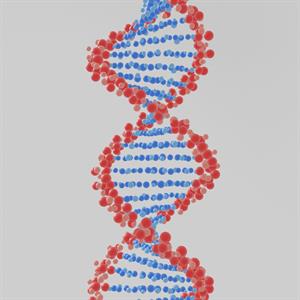
After finding that, Ebright and his college roommate, James R Wong, worked all night drawing pictures. In addition to that, they had constructed different plastic models of molecules to showcase how the cells work. After that, they started working on a paper about how the cell works. It was made to showcase that they had found something new in the whole world.
Furthermore, it was expected that if the hypothesis was proven to be right, it would be a significant step toward understanding the complicated system of life and would lead to new ideas for avoiding cancer and other disorders. Everything became possible only because of Ebright's curiosity about science and experiments.
Ebright had been interested in science since he first began collecting butterflies. In addition to that, he didn't stop him from pursuing his other passions. He was a great public speaker, a champion debater, and a strong boat racer (canoeist). He was also an accomplished photographer and an all-around outdoor sportsman. He was a talented photographer who excelled in capturing natural and scientific themes.
Ebright also admired his social studies teacher and an advisor to both clubs, Mr. Richard A. Welherer. Ebright believed that his instructor was the perfect person since he was the one who used to encourage him with fresh ideas.
Ebright's teacher used to say that Ebright would always give extra effort to things he did. His teacher was impressed with how Ebright would give an extra 3-4 hours of effort at night for the debate research, apart from his time for his butterfly research and other interests.
The teacher also added that Ebright was competitive but not in a bad sense. It means that he wasn't interested in winning to win or winning to obtain an award. Instead, he was victorious because he aspired to be the best. This is what makes a good scientist. Ebright needs a first-rate mind, curiosity, and an added will to win for the right reasons. When Ebright's mother got him the book 'The Travels of Monarch X' his curiosity about science was aroused. From that time onwards, his interest in science has never reduced.
